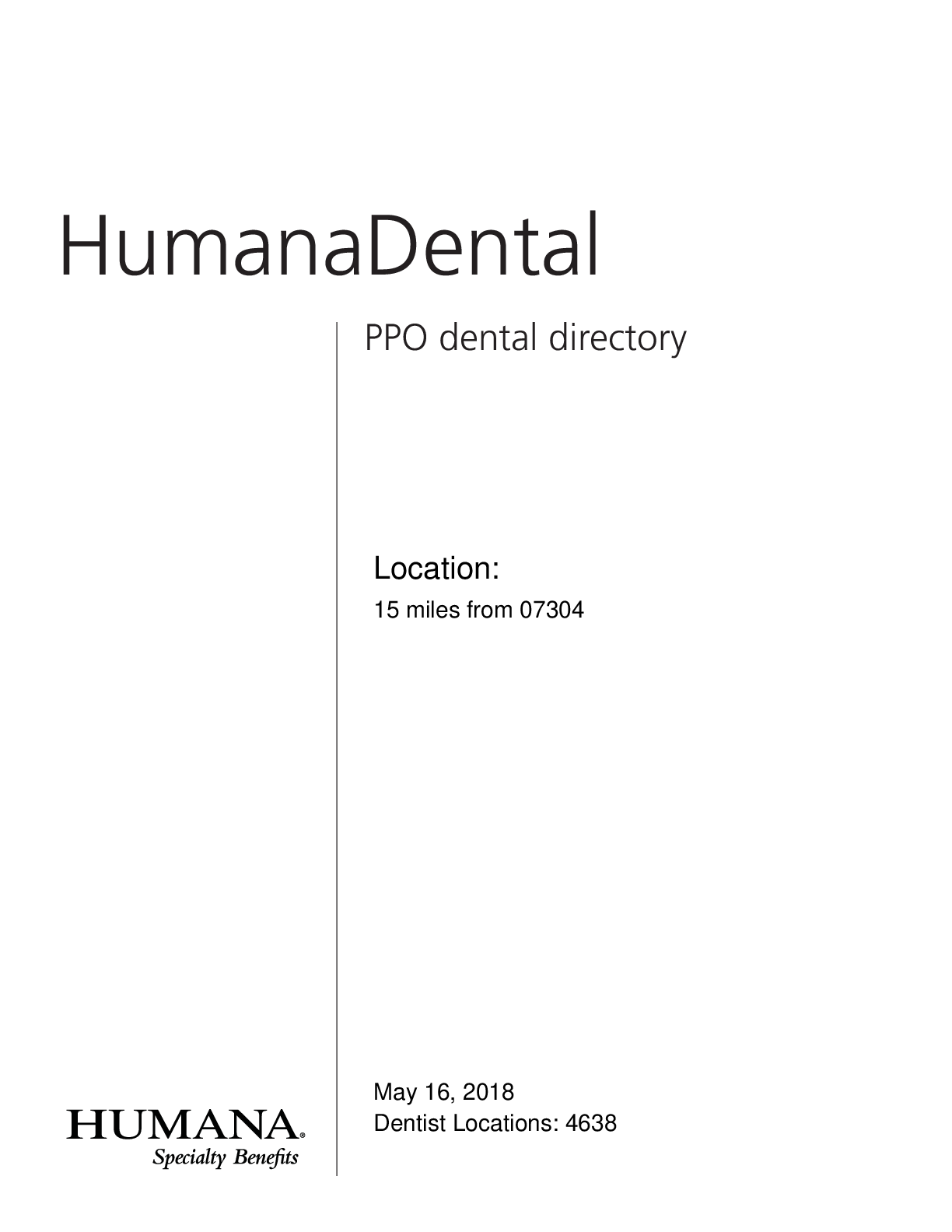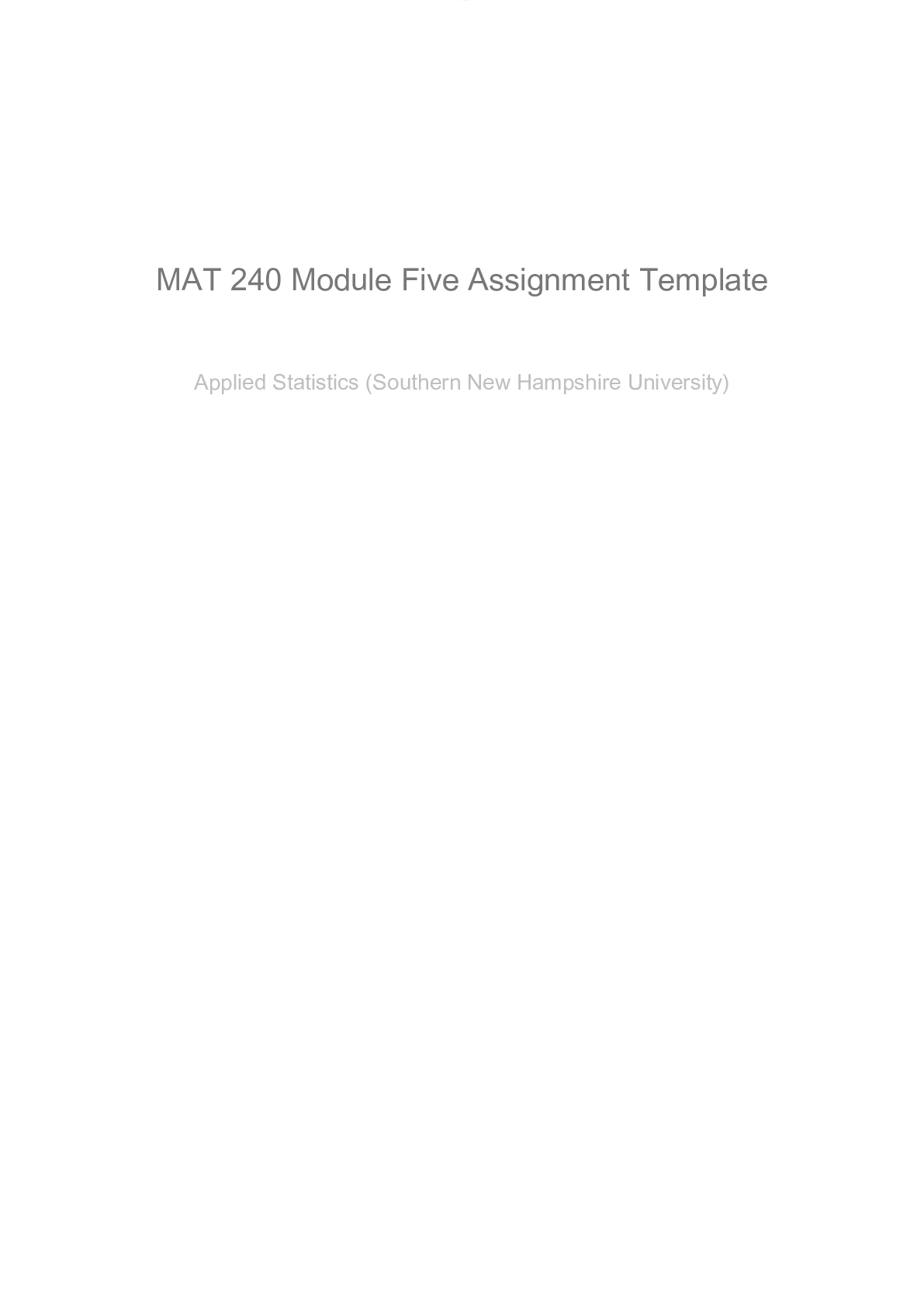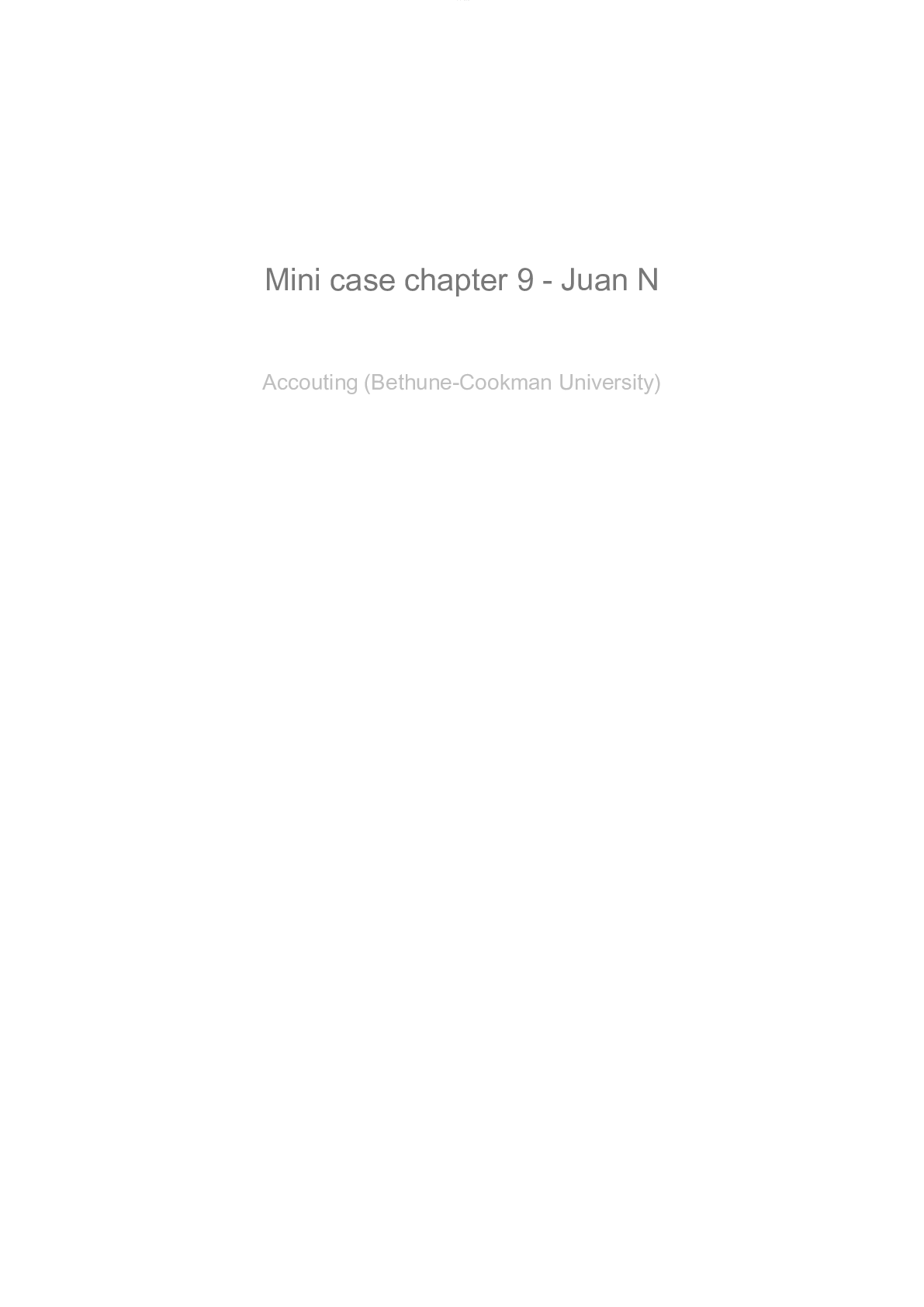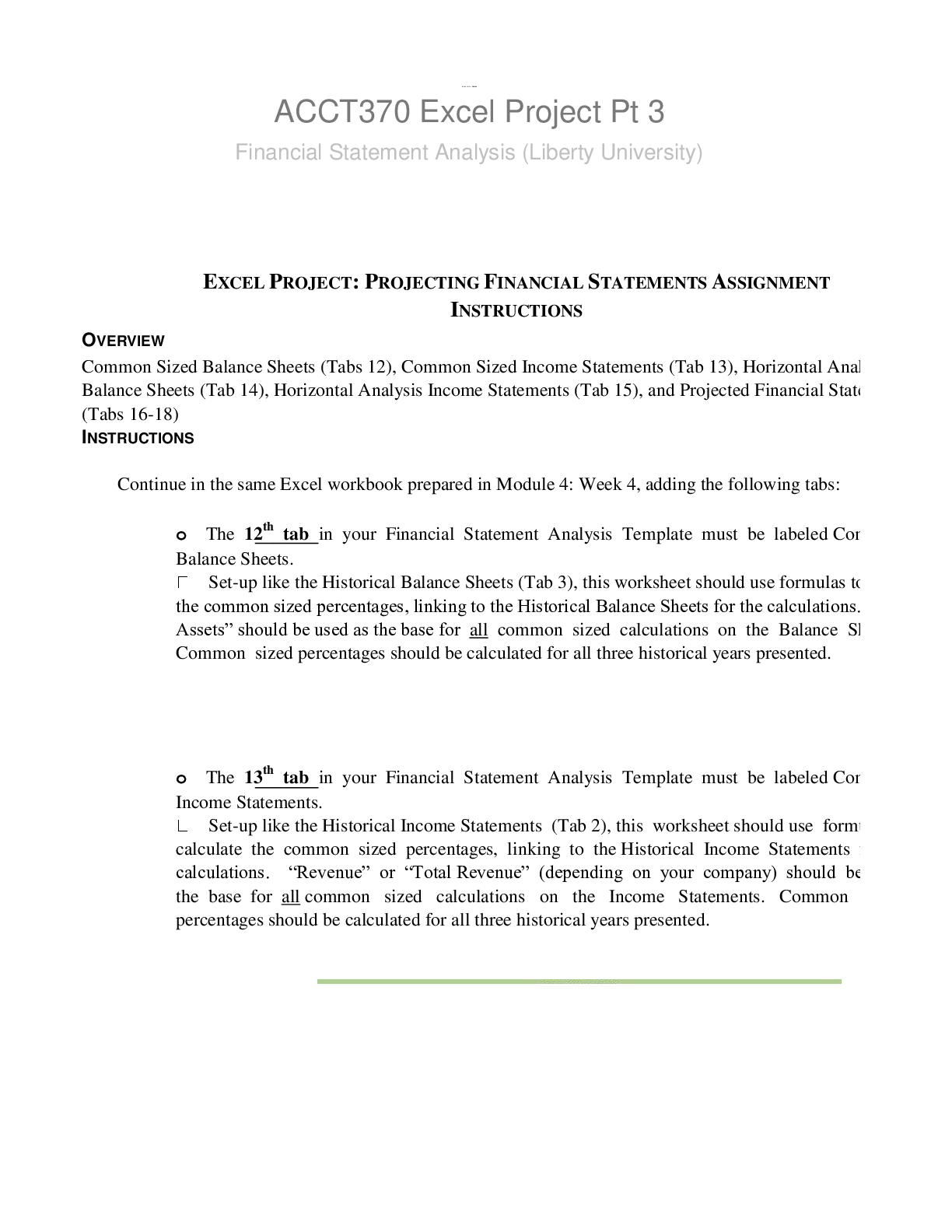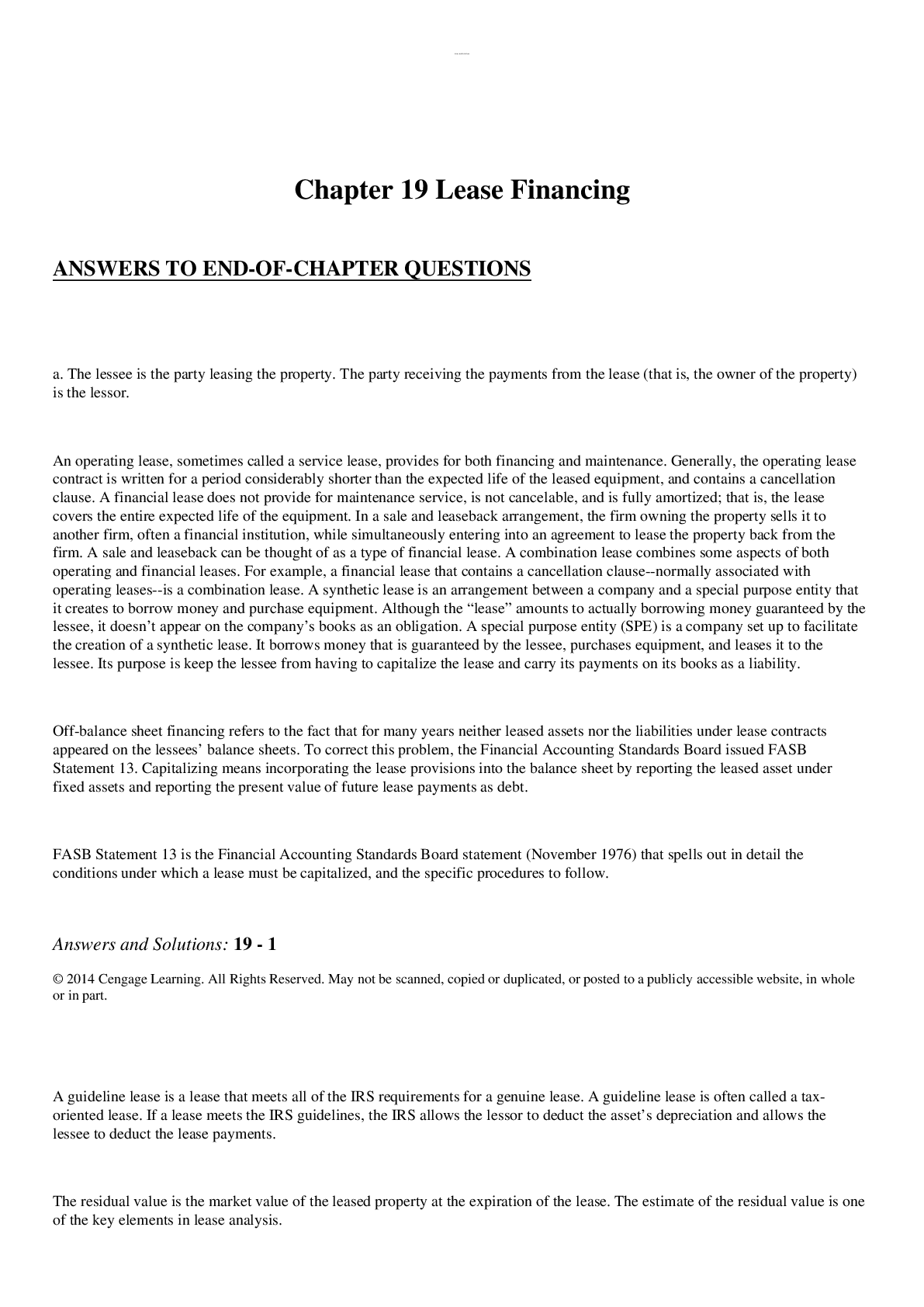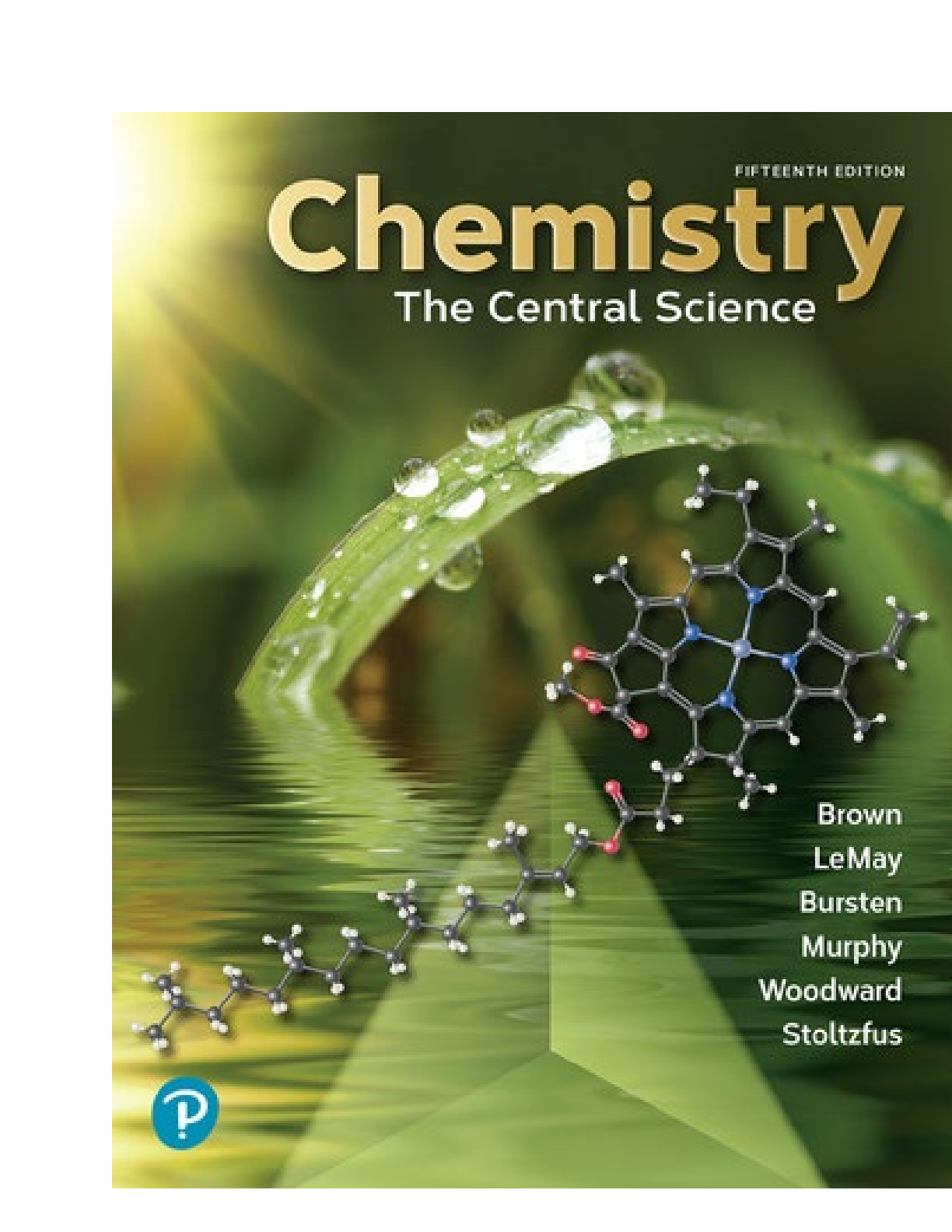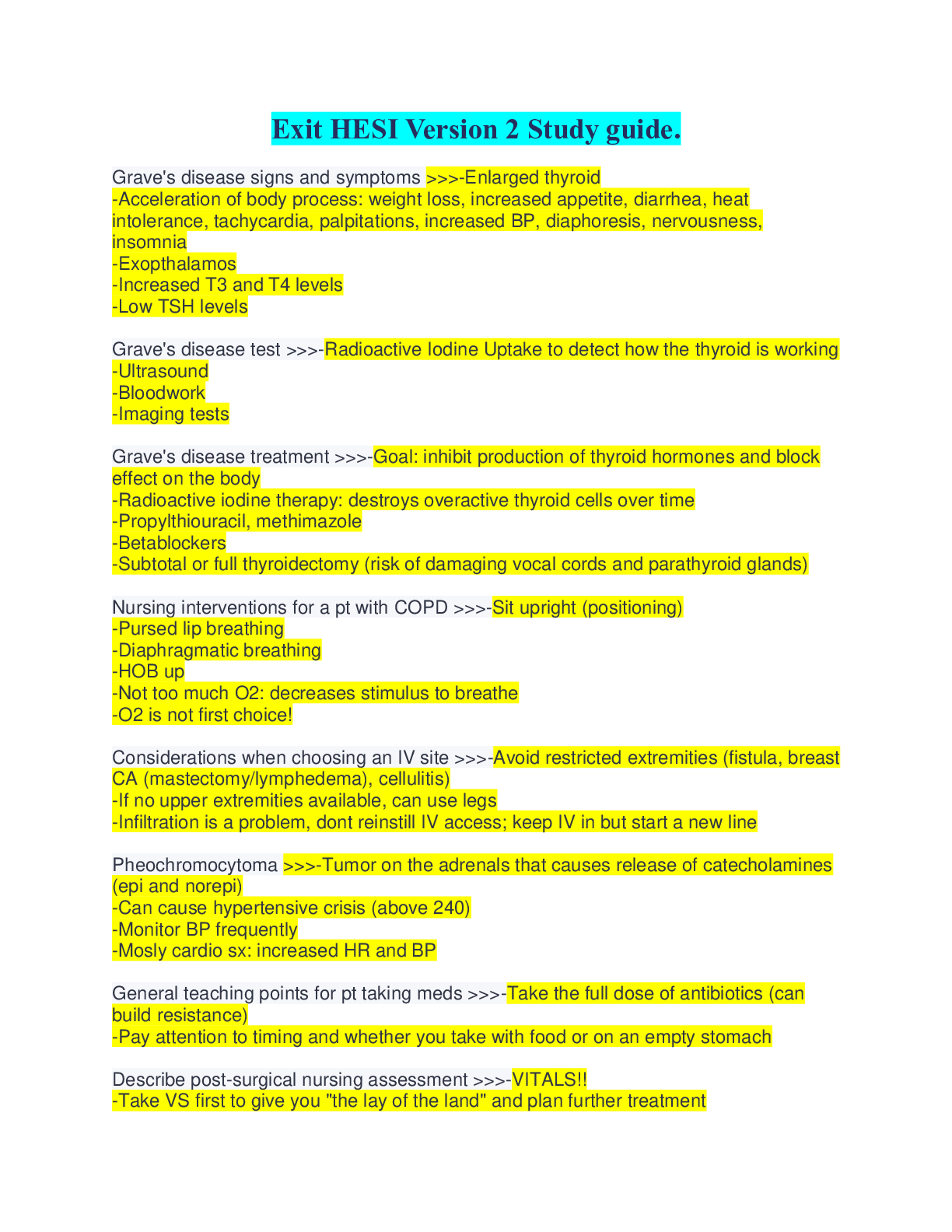*NURSING > Solutions Guide > NURS 4183Adult Health II - Shock, Sepsis & MODS. / Adult Health II - Shock, Sepsis and MODS. (All)
NURS 4183Adult Health II - Shock, Sepsis & MODS. / Adult Health II - Shock, Sepsis and MODS.
Document Content and Description Below
Shock— - Syndrome characterized by ↓ tissue perfusion and impaired cellular metabolism resulting in an imbalance b/w the supply of and demand for O2 and nutrients (exchange is essential for life)... . When cells experience hypo tissue perfusion, the demand for O2 and nutrients exceeds the supply at the microcirculatory level. - Types of Shock o Distributive shock o Hypovolemic shock o Cardiogenic shock o Obstructive shock Cardiogenic shock - Occurs when systolic or diastolic dysfunction of the heart’s pumping action results in reduced CO o Most common cause is acute MI o Early clinical presentation can be Tachycardia Hypotension Tachypnea with crackles & cyanosis - Manifestations to include o Decreased cap refill o Increased Na+ and water retention o Decreased urine output o Decreased bowels, N/V o Increased blood glucose o Increased BUN Hypovolemic Shock - Occurs after a loss of intravascular fluid volume o Absolute – loss through hemorrhage, GI loss, body drainage, diabetes insipidus or diuresis Loss of blood, loss of other body fluids through vomiting, diarrhea, GI bleeding, excessive diuresis o Relative – when fluid volume moves out of the vascular space into the extravascular space fluid shift, internal bleeding, massive vasodilation and pooling of blood or other body fluids - Manifestations to include o Tachypnea leading to the late sign of bradypnea o Decreased urine output o Pallor, cool clammy skin o Anxiety, confusion, agitation o Absent bowels o Decreased HCT & HGB o Increased lactate Neurogenic Shock - Can occur within 30 minutes of a spinal cord injury an can last up to 6 weeks - Most important clinical manifestations are o Hypotension o Bradycardia - Manifestations to include o Skin will initially be warm from massive vasodilation, then risk for hypothermia once heat disperses o Flaccid paralysis o Bladder dysfunction Anaphylactic Shock - An acute, life threatening hypersensitivity allergic reaction. - Reactions causes massive vasodilation, release of vasoactive mediators (can constrict or dilate) and increased capillary permeability leading to fluid leaks from the vascular space into the interstitial space - Can lead to respiratory distress - Sudden onset of symptoms include o Dizziness o Chest pain o Incontinence o Swelling of lips and tongue o Wheezing and stridor o Flushing skin o Pruritus and urticaria o Confusion o Metallic taste Septic Shock - Sepsis is defined as a set of symptoms or syndrome in response to an infection - Shock is a subset of sepsis with an increased mortality. It is characterized by persistent hypotension and inadequate tissue perfusion - Manifestations to include o Hyperventilation o Crackles o Respiratory alkalosis leading to acidosis o Pulmonary HTN o Respiratory failure o Warm & flushed skin leading to the late sign of cool & mottled o Confusion & agitation, can lead to coma (late) o Increase glucose o Increased lactate o Decreased platelets Sepsis/Shock Continuum » SIRS = initial insult (inflammatory response) » Sepsis = SIRS + suspicion or confirmed infection » Severe Sepsis = SIRS + infection + hypoperfusion or organ dysfunction » Septic Shock = SIRS + infection +organ dysfunction + refractory hypotension o Invasion of microorganism with an amplified response to the infection Bacteria (most common) Fungus, virus or parasites o Septic shock is the end result Obstructive Shock - Develops when a physical obstruction to blood flow occurs with a decreased CO - Manifestations to include o JVD o Pulsus Paradoxus o Hypotension o Tachypnea leading to late bradypnea o SOB o Decreased urine output o Pallor cool and clammy skin o Decreased or absent bowels o Decreased cerebral perfusion Stages of Shock » Initial stage o Metabolism changes from aerobic to anaerobic causing lactic acid buildup Lactic acid is usually removed by the liver, however this process requires O2, which is unavailable due to the decrease in tissue perfusion » Compensatory stage o The body activate compensatory mechanisms in attempt to overcome the increasing consequences and maintain homeostasis o The pt clinical presentation begins to reflect the body’s response to imbalanced O2 supply and demand o Classic sign of shock is drop in BP (hypotension) o The SNS is activated which stimulates vasoconstriction and release of Epi and NorEPi Blood flow to the most vital organs (heart and brain) is maintained & blood flow to nonvital organs such as kidneys, GI tract, skin, lung is diverted or shunted • This effect, is reason for clinical manifestations » Progressive stage o This stage begins as compensatory mechanisms fail o In this stage, aggressive intervention are necessary to prevent the development of MODS o Changes in pt mental status are important in this stage and a move to ICU is necessary o Cardiovascular system is profoundly affected at this stage Continued decreased cellular perfusion and resulting altered capillary permeability are the distinguishing features of this stage Myocardial dysfunction and decreased perfusion results in dysrhythmias, myocardial ischemia and possible MI. End result is complete deterioration of the CV system o The respiratory system is usually the first to display signs of critical dysfunction [Show More]
Last updated: 1 year ago
Preview 1 out of 9 pages
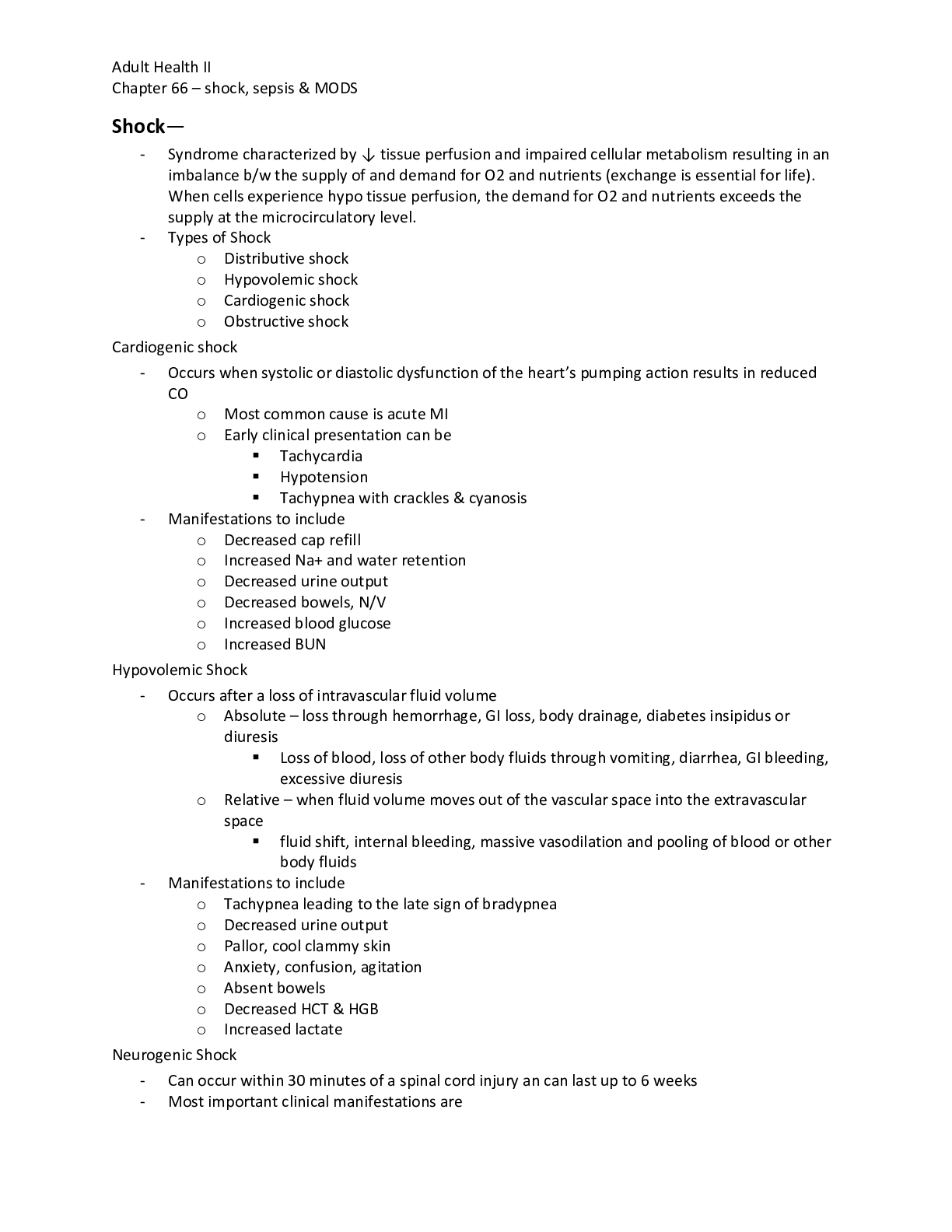
Reviews( 0 )
Document information
Connected school, study & course
About the document
Uploaded On
Feb 16, 2021
Number of pages
9
Written in
Additional information
This document has been written for:
Uploaded
Feb 16, 2021
Downloads
0
Views
69

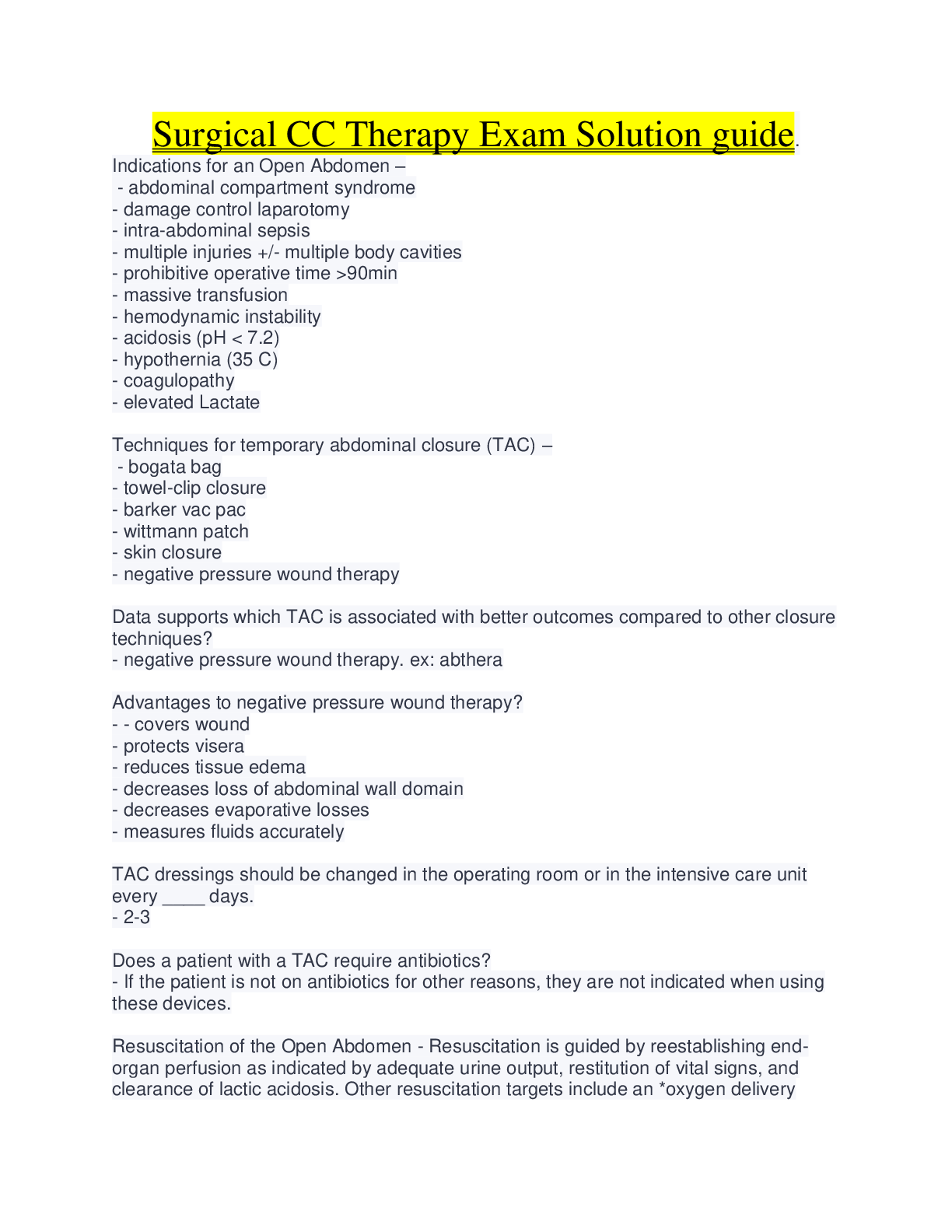

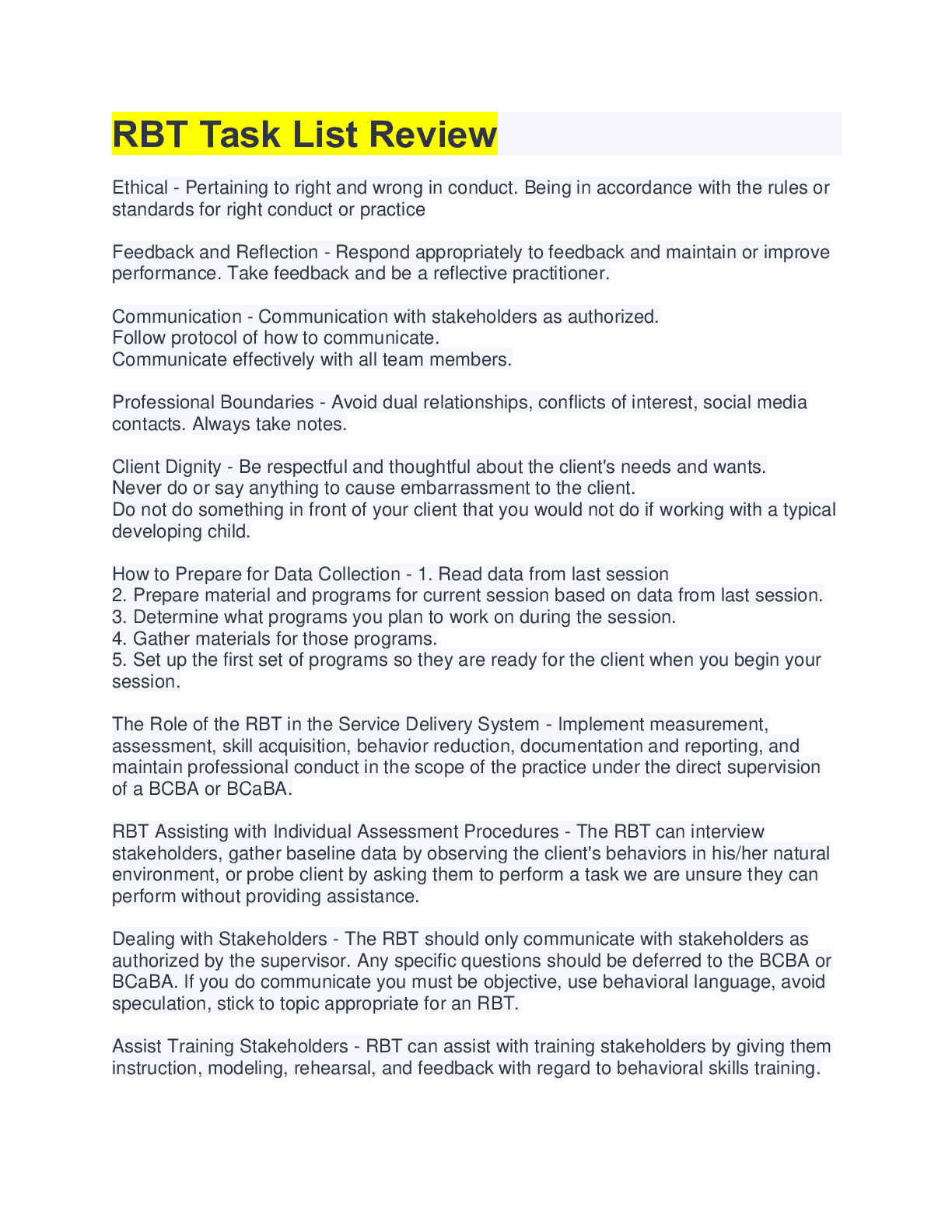
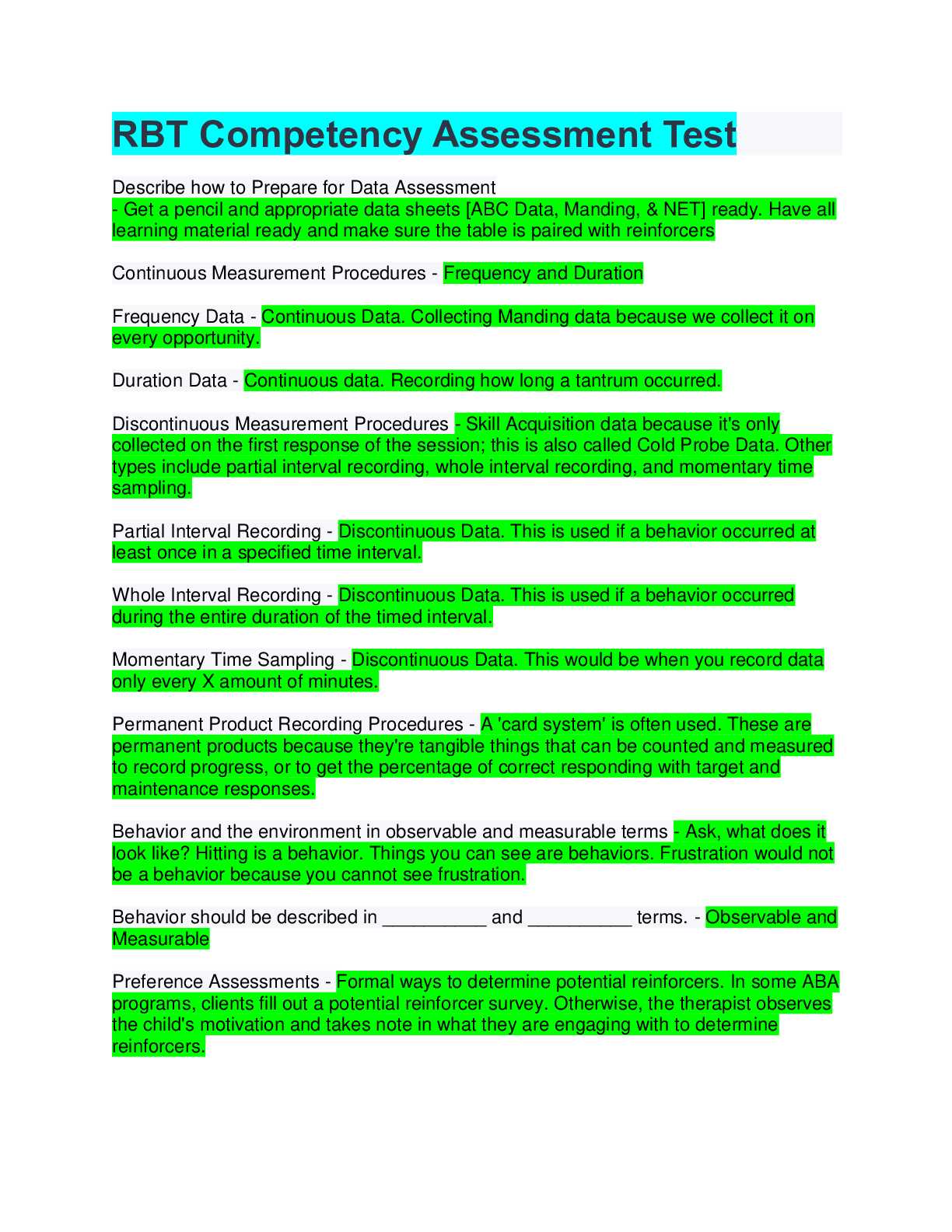


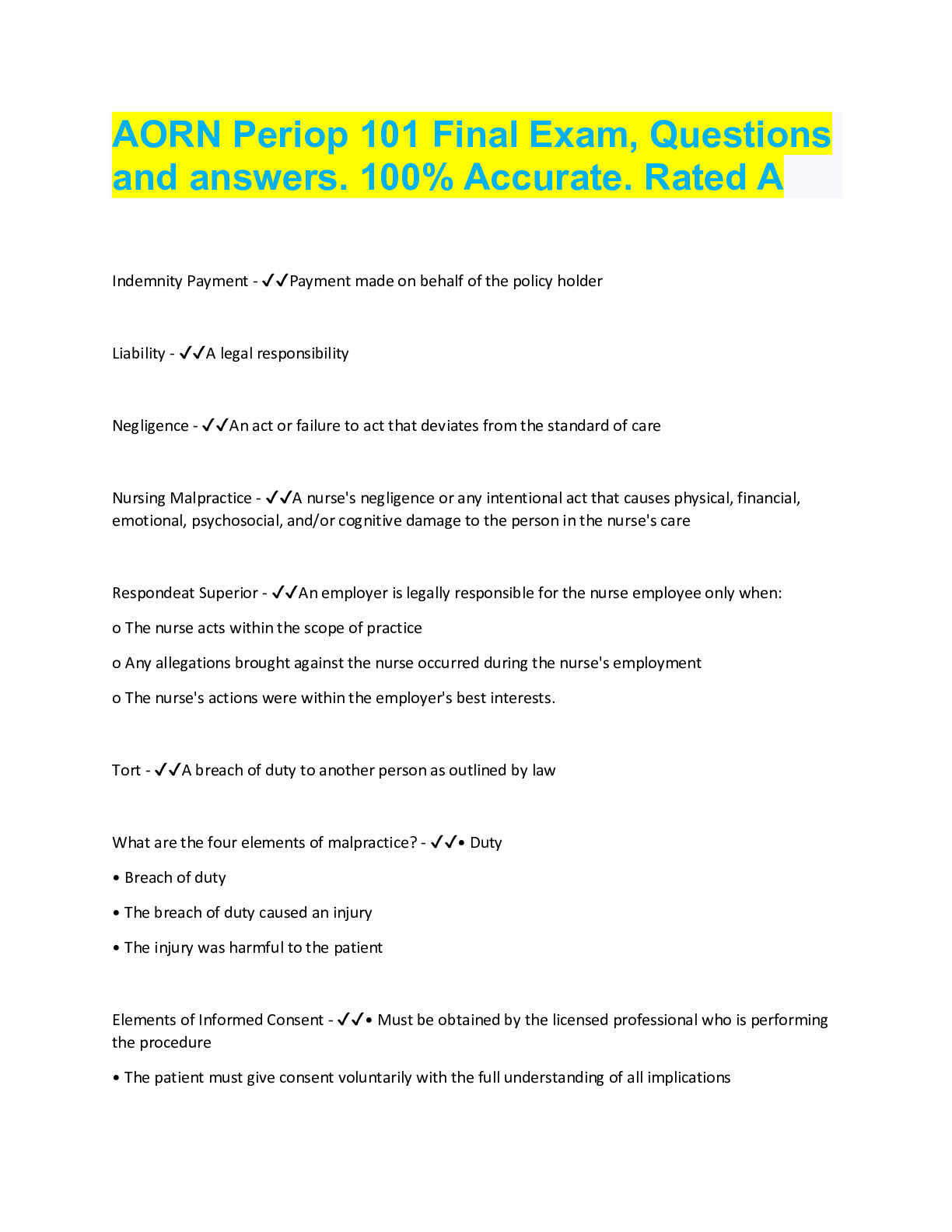

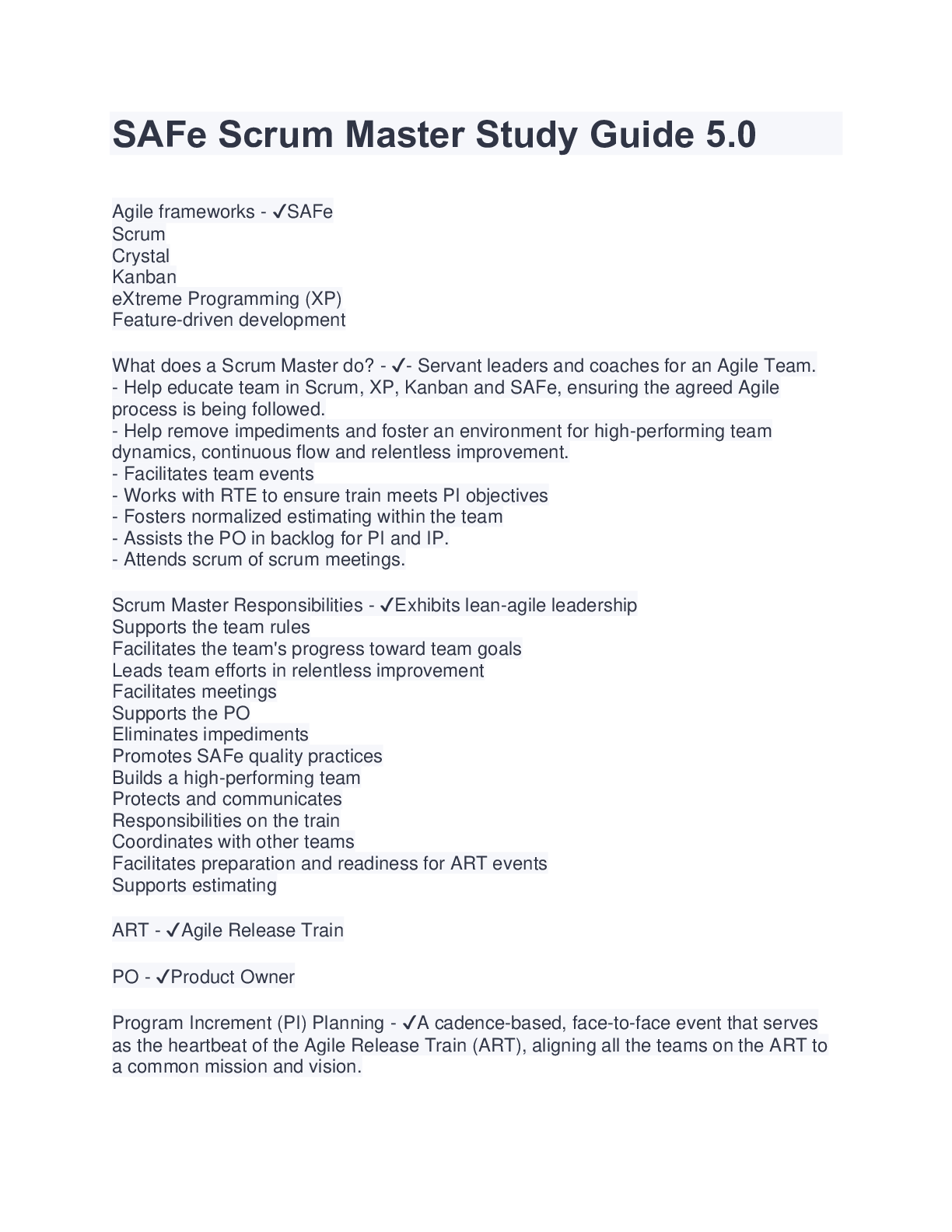

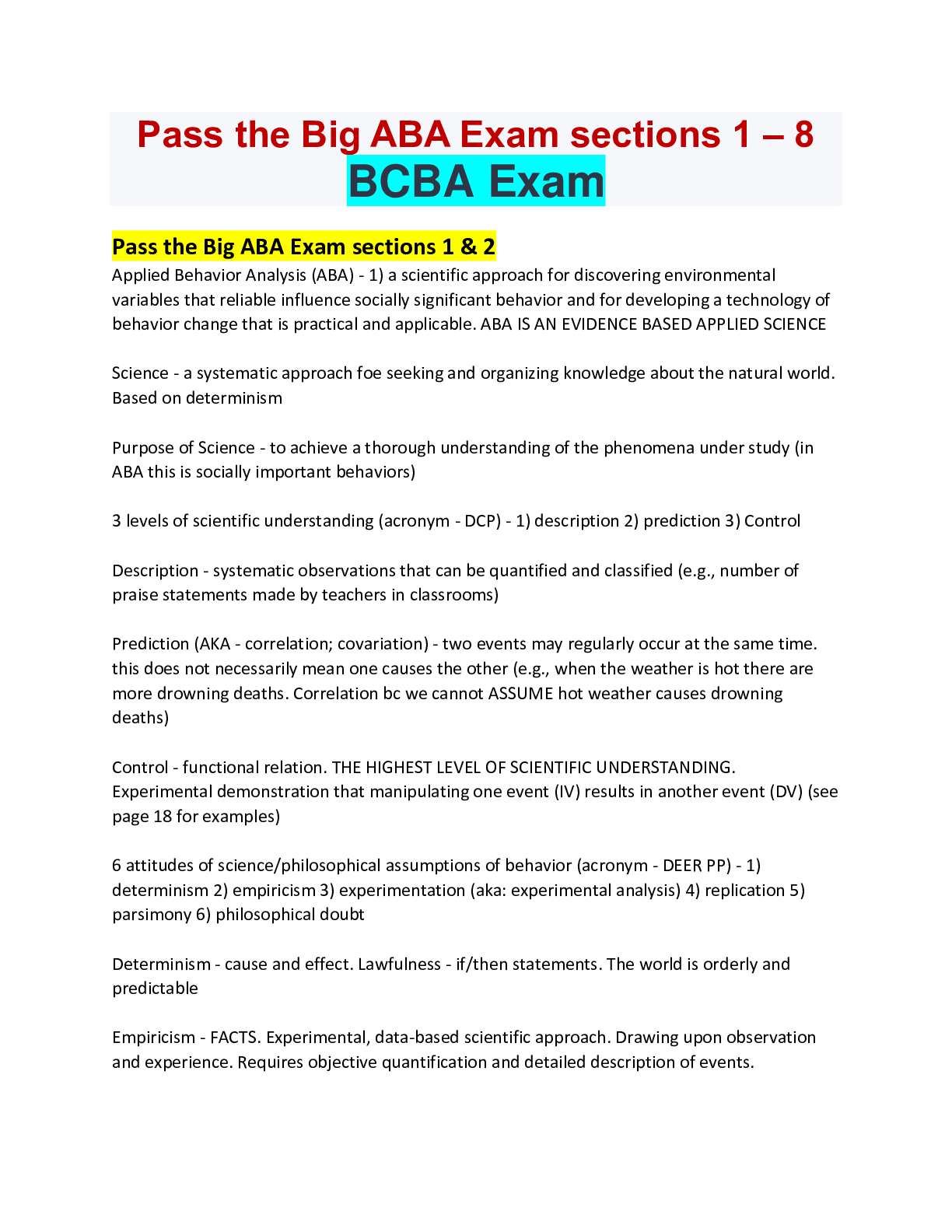
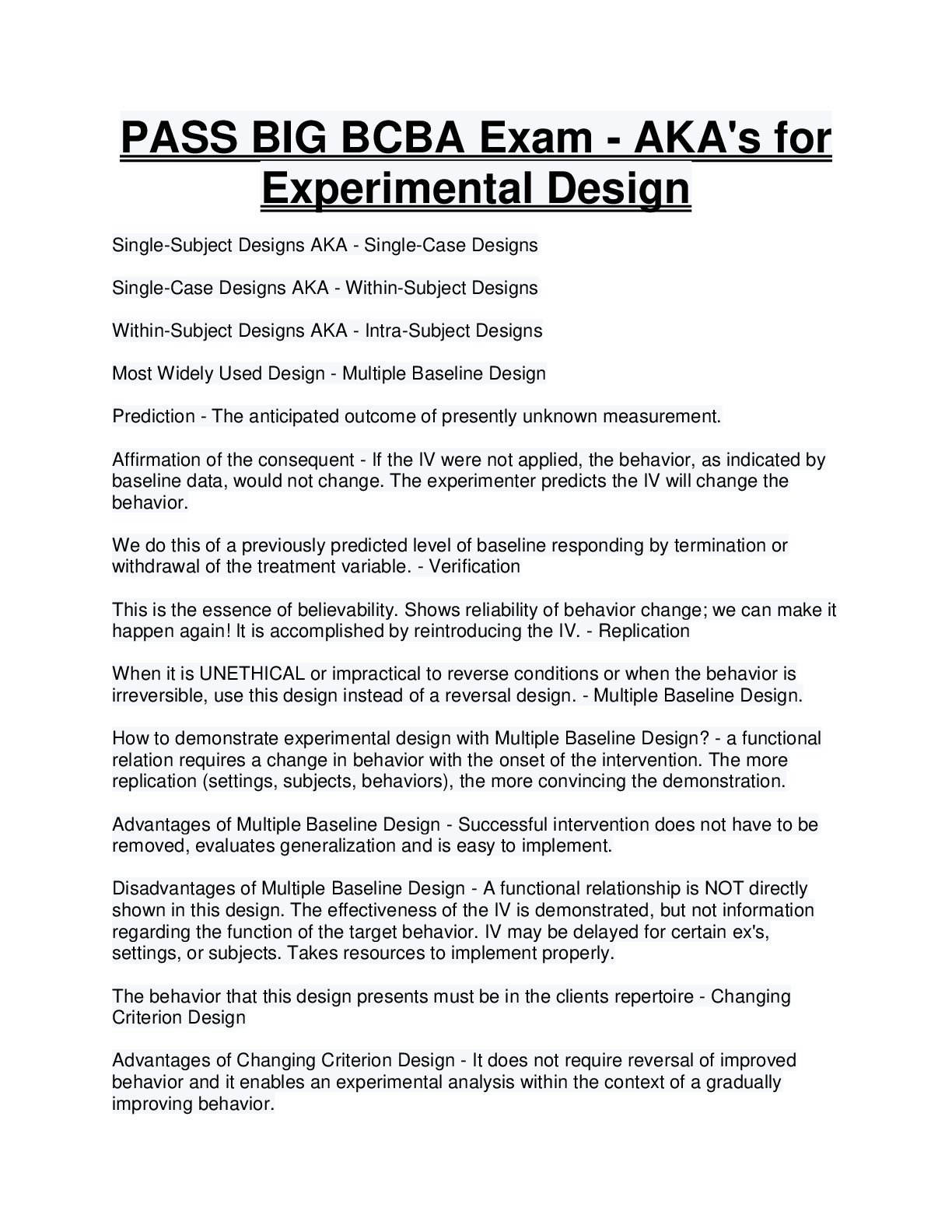
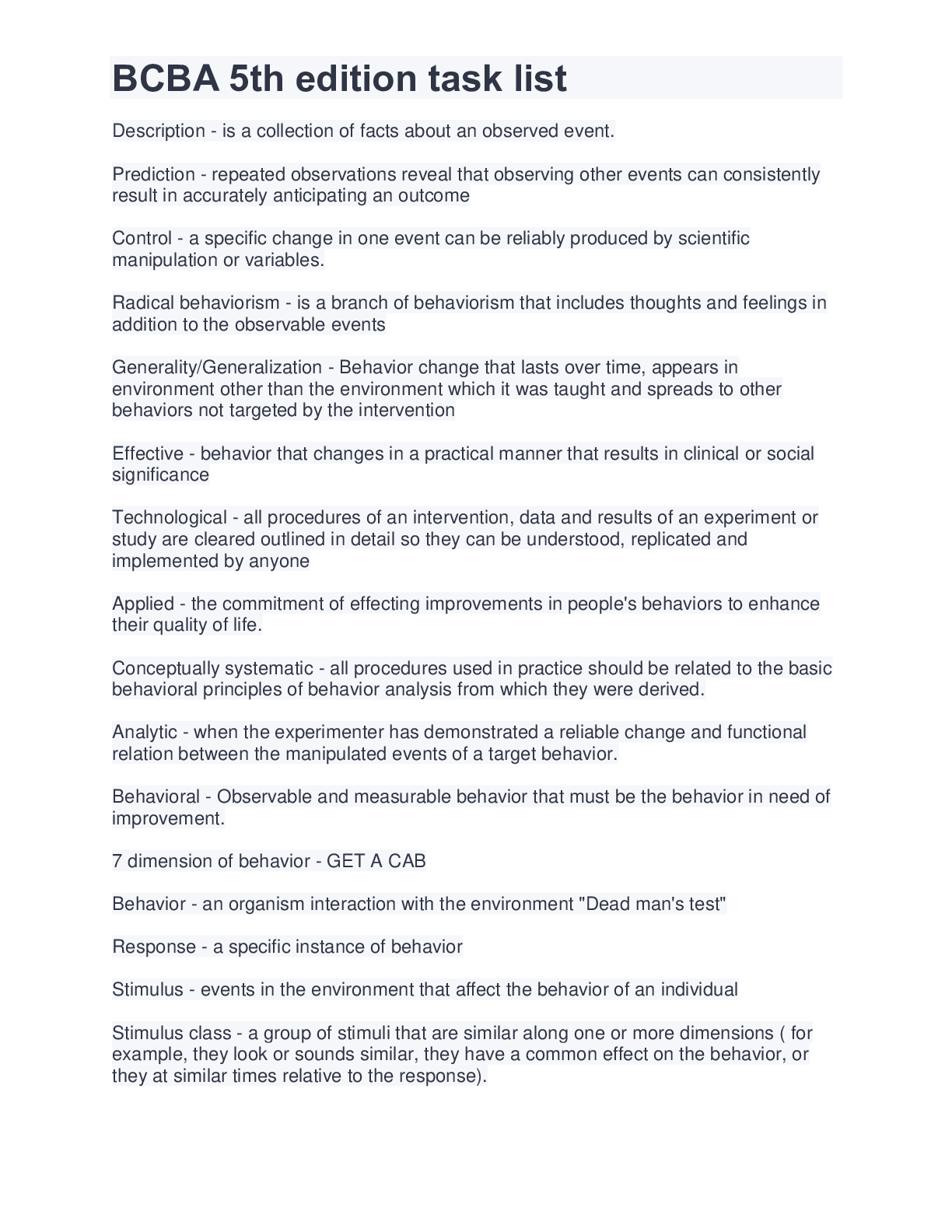
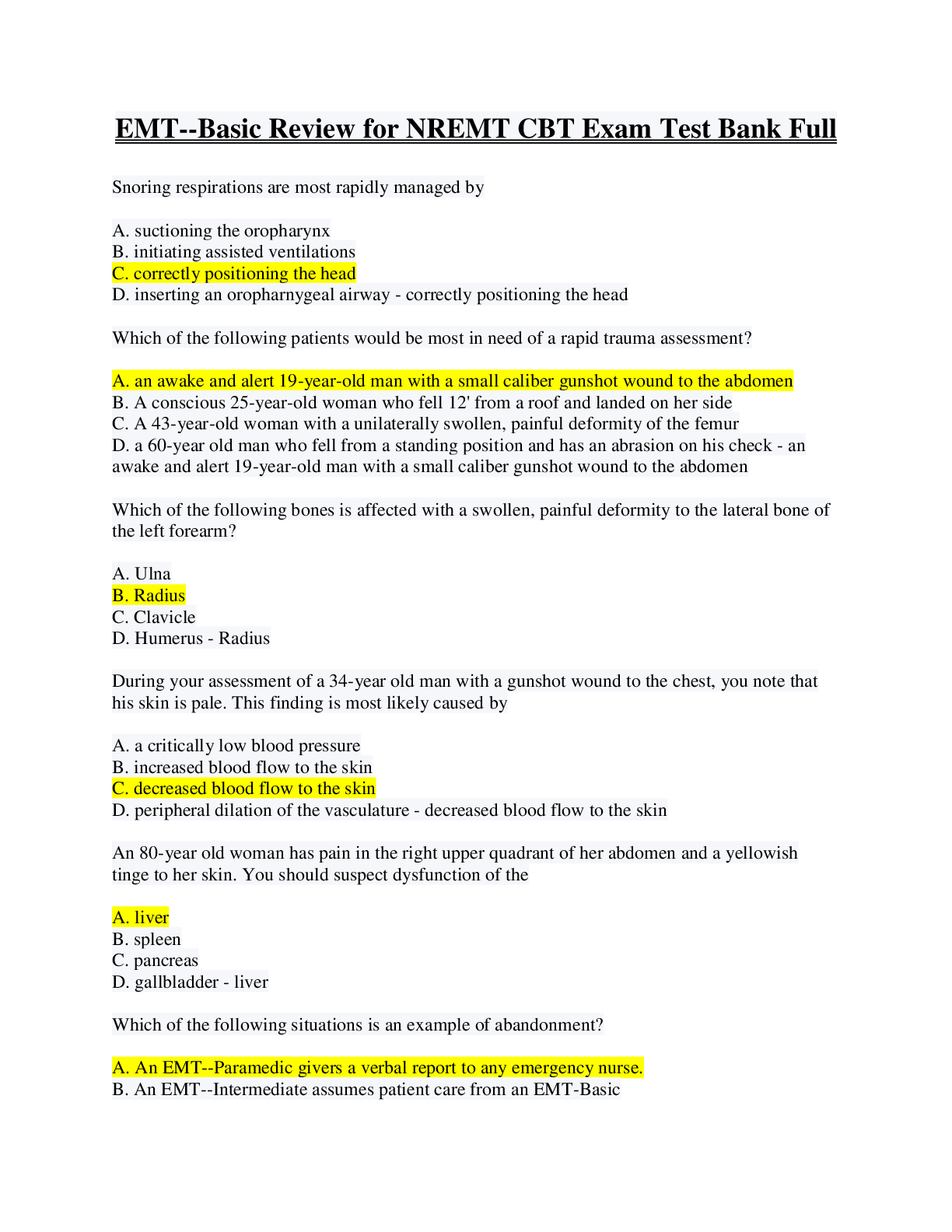

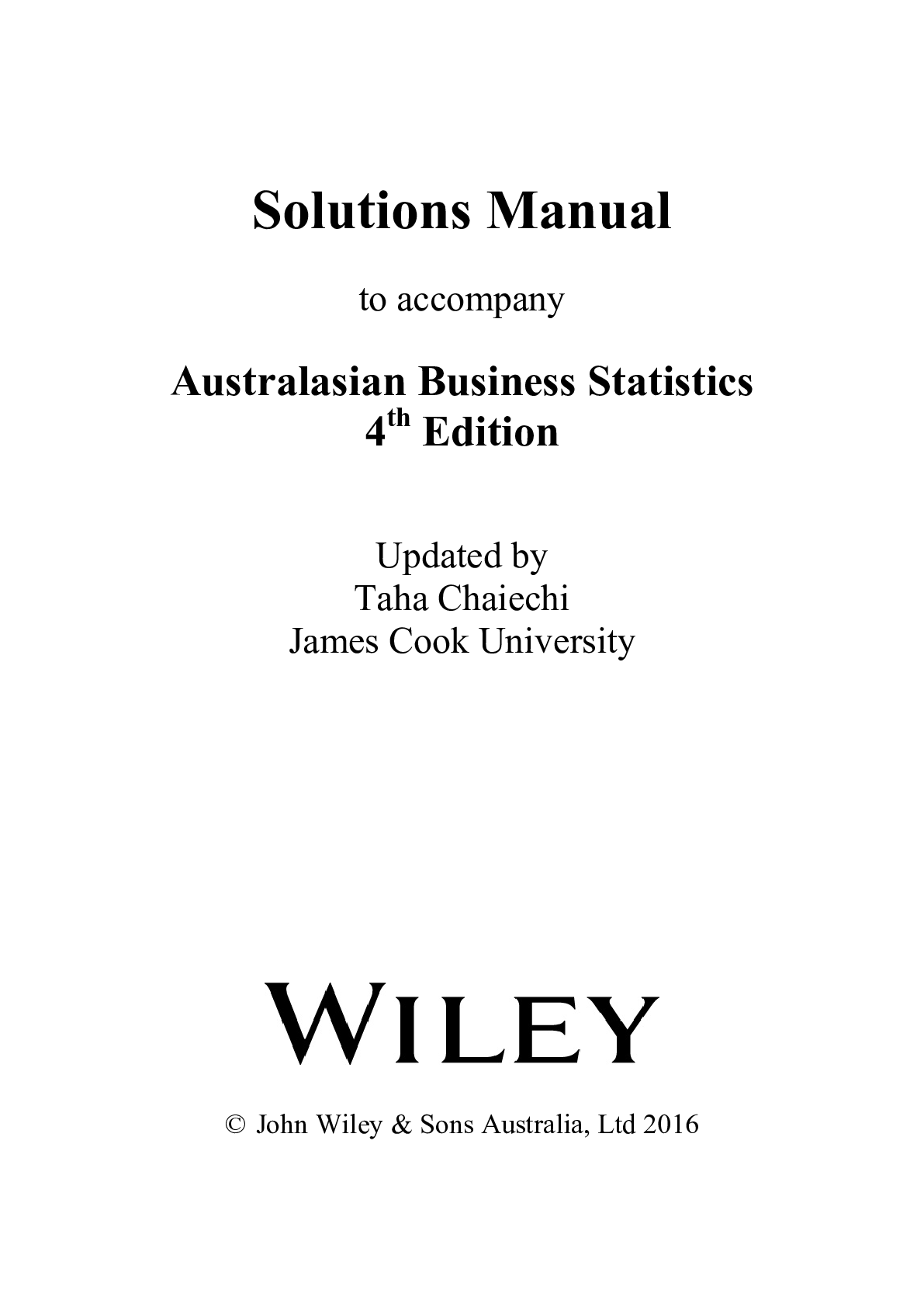

.png)
